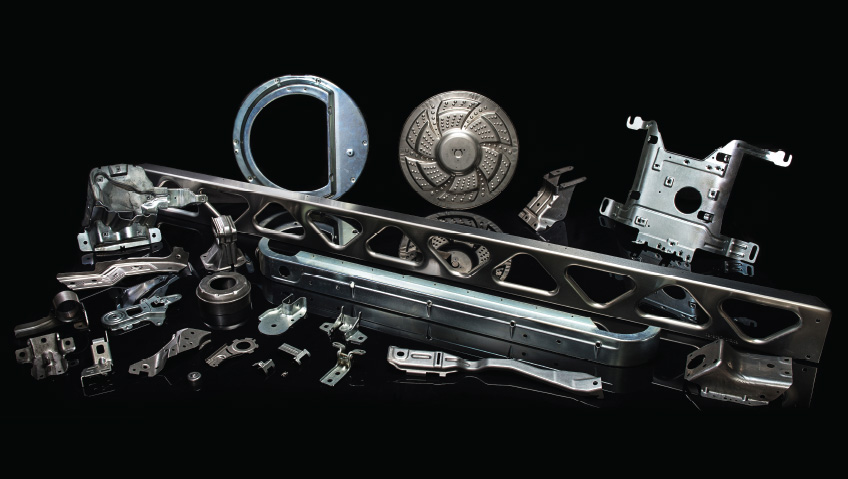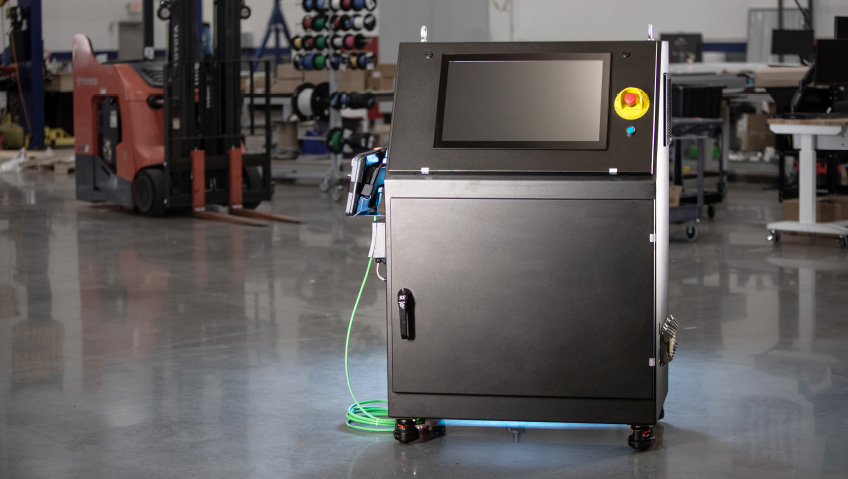It is nearly impossible to imagine a world where metal fabrication is not a foundational part of both the construction and manufacturing industries. Transparency Market Research reports that the North American metal fabrication market was valued at US $4 billion in 2022 and could potentially reach as much as $6.5 billion in a little over five years. Yet even some of the most in-demand materials in the industry can always be improved upon—from how they are created to what is being done to make the processes around them more efficient.
Perhaps the most widely used metal material for building today is steel, thanks especially to its versatility as a resource. In a blog post for Built: The Bluebeam Blog, Erin Flynn Jay writes that demand for it has rapidly increased lately due to rising amounts of skyscraper construction. “Steel is an essential component for high-rise buildings due to its functionality and strength,” she writes. Steel is produced when iron ore and scrap metal go through the process of basic oxygen steelmaking (BOS) which uses a blast furnace, and/or electric arc furnaces (EAF) which use scrap steel or direct reduced iron (DRI).
An offshoot of this material is stainless steel, which is more appropriately used for applications that are found outdoors or that require a greater degree of hygiene, since stainless steel is more weather-resistant and cleaner for use by humans. The process of creating stainless steel is very different from its namesake, however, as it is an alloy that contains iron as well as many other elements like nickel, nitrogen, carbon, and more (including at least 10.5 percent chromium). These elements make it more resistant to corrosion; they are all melted together as raw materials and the material’s attributes are created through forming, heat treating, and cutting and shaping.
Aluminum is another versatile metal that occupies its own proprietary segment of the metal construction space. Like steel, aluminum has its own specific process known as the Hall-Héroult process, which dissolves the oxide alumina in molten cryolite. Unfortunately, the Hall-Héroult process consumes a lot of electrical energy and can produce significant amounts of carbon emissions. It can also be responsible for producing fluorocarbon compounds as a byproduct, which can add to both ongoing air pollution and climate change, so it is not an especially efficient process.
Copper is still used in electrical wiring and plumbing found in traditional homes, and in more aesthetic applications. According to Metal Supermarkets, “Copper can also be used for fascias, roofing materials and other ornate components, popular on buildings such as churches and cathedrals.” Various countries across both Europe and Asia are among the top copper ore smelters—China especially—and the methods for doing so can differ depending on geographic location and the environmental regulations within.
Other types of metals also have various uses in construction. For example, brass performs and is used very similarly to copper. Conversely, while cast/wrought iron has been overtaken in architectural usages, it can still be found in smaller applications closer to home, from the family car to skillets and more. Finally, lead is still used in certain construction contexts because it is considered easy to work with (i.e. roofing, paints), although prolonged lead exposure can be harmful to humans, so its use is heavily monitored for safety reasons.
After one of these materials is produced, it is moved to job sites and locations worldwide. An article by DFreight details the various methods used to ship metals and materials around the globe. First, ocean freight is described as “a cornerstone of global trade,” especially when shipping metal in bulk. This can be achieved through the use of bulk carriers and container ships, the latter of which are easier to handle, more efficient, and protect from weather and the elements. Conversely, air freight is a method that allows for speed, efficiency, and global reach. Shipping via plane tends to cost more than ocean shipping but can make up for it thanks to these other factors.
Compared to these two avenues, though, land vehicles like trucks and trains are perhaps the most tried-and-true methods of metal transportation. Trucks can be beneficial for smaller quantities and shorter distances, says DFreight, while railways can be helpful in connecting production sites to ports or distribution centres. When it comes to materials like steel, it is moved via specialized cargo haulers made to ship objects of particular size, since steel is often too large and heavy for typical commercial vehicles.
Countless brands in myriad fields today are considering how to make their processes more efficient—not only in terms of speed but also energy efficiency. One way that metal fabricators can improve the efficiency of the entire metal fabrication process is through embracing automation. Escofab states that tools like CNC (Computer Numerical Control) machines and laser cutting can automate metal fabrication to exact specifications and in much less time than traditional methods. Furthermore, custom fabrication can streamline the process by sending parts or sections pre-assembled for a client to easily assemble on site. By reducing labor requirements and improving client workflow, custom fabrication “can make a substantial difference in both project timelines and budget allocations.”
A blog post by Andy Smith for Prince Manufacturing explains that the use of lean manufacturing principles can increase productivity for metal fabricators. Lean manufacturing is a philosophy embraced by many businesses across innumerable sectors that follows a series of concepts that optimize performance while minimizing waste. These principles include simplification through keeping an organized workplace, being exact in what materials customers will need for a successful project, and continuous improvement through eliminating waste, reducing costs, and increasing efficiency.
The steelmaking process is very carbon emission-intensive. Caitlin Swalec, research analyst at Global Energy Monitor, writing for CarbonBrief, says that the iron and steel industry is responsible for as much as 11 percent of global carbon dioxide emissions and fabricators need to embrace carbon-neutral practices sooner rather than later. Steel fabrication specifically can—and should—enhance efficiency through automated fabrication technologies such as beam line technology, which is used to speed up the process of cutting and drilling steel beams. This tool reduces the time spent on steelmaking while increasing worker safety by not requiring a human to perform the measurements and cutting.
No matter what aspect of metal manufacturing is being examined, a great deal of thought and effort is being put into its processes to make them better than they were yesterday. For such a valuable industry the world over, metal fabrication simply cannot live up to its promise of becoming more efficient and meeting changing global efficiency standards without undergoing constant evolution in the ways that metal is created, shipped, and used. The future of the industry lies not only in greater speed and precision but also in cleaner production, smarter logistics, and stronger collaboration across sectors. As automation, lean practices, and carbon-reduction strategies continue to take hold, fabricators are not simply shaping metal—they are reshaping the very framework of construction and manufacturing for decades to come.





